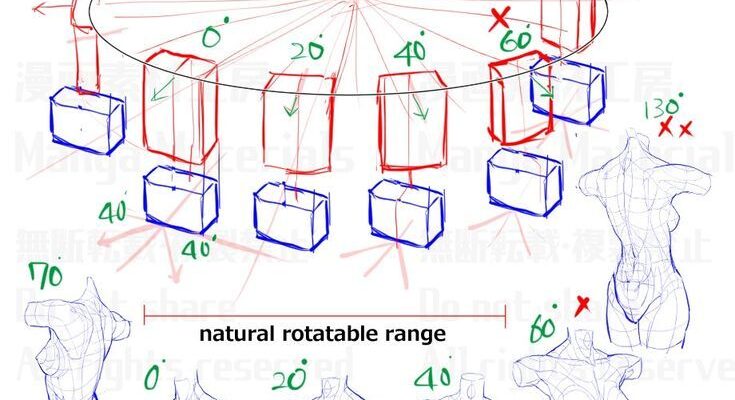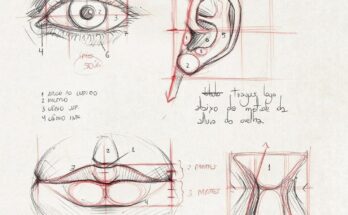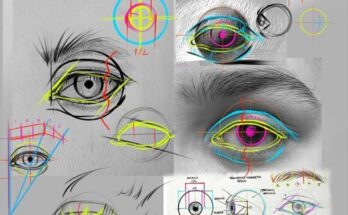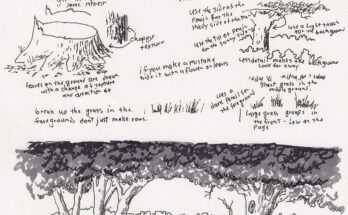Step-by-Step Tutorial on Drawing a Celestial Horse: Anatomy, Ethereal Details, and Cosmic Effects for Fantasy Artwork

Creating a celestial horse—a majestic steed infused with cosmic beauty and otherworldly charm—offers artists a unique opportunity to blend equine anatomy with imaginative fantasy elements, ideal for book illustrations, game designs, or mythological art. This detailed tutorial is inspired by a reference sketch titled “Celestial Horse,” which portrays a rearing horse with a flowing mane and tail adorned with starry accents, rendered in pencil with light shading. The image features a dynamic pose with the horse on its hind legs, wings sprouting from its back, and a nebula-like glow emanating from its form. Red construction lines overlay the figure to guide the pose’s energy, joint placement, and wing structure, while annotations highlight ethereal details like the mane’s cosmic swirl and hoof luminescence. Set against a faint starry sky, the composition evokes a night scene, blending realism with fantasy for a captivating visual narrative.
This guide is crafted for intermediate artists, whether working traditionally with graphite on smooth paper or digitally using tools like Procreate, Photoshop, or Krita, where layers can separate guidelines, base colors, and effects. We’ll break it down into sections based on the reference: establishing the pose and anatomy, detailing the mane and tail with cosmic elements, constructing wings and hooves, and adding atmospheric effects. Key techniques include using gesture lines for dynamic movement, layering translucent effects for a glowing aura, and applying perspective for wing depth. This approach suits fantasy genres like epic sagas or celestial-themed RPGs, encouraging reference from horse photography (e.g., rearing poses) or astronomical images (e.g., nebulae). Start with light sketching tools (e.g., H pencil or 20% opacity brush), a ruler for symmetry, and an eraser for adjustments, progressing to B pencils or opacity builds for shading. Given today’s date—03:20 AM EDT on Friday, October 24, 2025—this tutorial aligns with a pre-dawn setting, enhancing the celestial mood.
Section 1: Establishing the Pose and Anatomy (Red Construction Lines)
The reference’s red lines capture the horse’s rearing energy, providing a structural foundation.
- Mapping the Gesture Line: Begin with a sweeping red line from the head, curving through the arched neck, chest, and hindquarters, ending with the raised forelegs. The image shows a pronounced C-curve as the horse rears, with the spine bending backward and the tail flowing upward. Draw this as a single, fluid stroke, about 4-5 head lengths tall, to convey power and grace.
- Marking Joints and Axes: Place red circles at key joints—shoulders, elbows, hips, knees, and fetlocks—scaling them to prominence (e.g., larger at hips for weight). Add axes along limbs: forelegs angle forward with hooves up, hind legs bend for support, and the neck tilts upward. The reference’s low perspective enhances the horse’s majesty, so tilt the horizon upward.
- Perspective and Balance: Use a two-point perspective with vanishing points off-canvas to the left and right, converging lines toward the chest and hooves. Ensure weight shifts to the hind legs, with the forelegs lifted for balance. Tip: Observe a rearing horse video to mimic the stretch. Common error: Over-straightening—keep lines dynamic. Exercise: Sketch 3 quick gestures of this pose (standing, galloping, rearing) using only red lines to build versatility.
This step locks in the pose’s vitality, preventing static or awkward forms.
Section 2: Detailing the Mane and Tail with Cosmic Elements (Ethereal Features)
The reference’s pencil work highlights the mane and tail as focal points, infused with starry and nebulous effects.
- Anatomical Base: Sketch the head as a refined oval with flared nostrils and a proud eye, the neck as a muscular curve, and the tail as a flowing ribbon. The torso is a broad cylinder, tapering to the hindquarters, with the image’s shading suggesting a sleek build.
- Cosmic Mane and Tail: Draw the mane and tail with wavy, overlapping lines, adding small star-like dots and soft gradients for a nebula effect. The reference shows the mane swirling upward from the poll, with faint blue or purple hues implied in annotations. Use irregular shapes—spirals or wisps—to suggest cosmic energy, denser near the head and thinning at the ends.
- Texture Refinement: Add light cross-hatching for hair strands and speckles for stars, with a soft blur (e.g., stump or airbrush) for the glow. The image’s annotations suggest luminescence, so plan light from above-left. Avoid mistake: Overloading stars—limit to 5-10 per section for balance. Exercise: Detail a mane segment with stars and gradients, then replicate on the tail.
This builds an otherworldly aesthetic, enhancing the horse’s celestial identity.
Section 3: Constructing Wings and Hooves (Wing Dynamics and Luminescence)
The reference’s wings and hooves add to the horse’s mythical allure, with detailed construction.
- Wing Structure: Sketch wings as feathered or bat-like membranes (per your style), with a central arm (humerus) and elongated fingers supporting the skin. The image shows wings outstretched, with red lines indicating a curved span—about the body length. Draw the arm as a bent cylinder, adding finger joints (3-4 segments) with translucent membranes, tapering to feathered tips. Add veins or light streaks for ethereal texture.
- Hoof Detailing: Refine hooves with a rounded base and curved edges, adding a faint glow effect (e.g., white outline or soft halo). The reference’s annotations suggest luminescence, so emphasize the forehooves’ upward tilt with a subtle gradient.
- Integration Tips: Align wings with the gesture line’s arc, tilting upward for lift. Ensure hooves reflect the rearing stance, with rear hooves grounded and forehooves raised. Common pitfall: Disjointed wings—use perspective to converge finger tips. Exercise: Draw a single wing from multiple angles, then attach to the torso with glowing hooves.
These elements amplify the horse’s divine presence.
Section 4: Adding Atmospheric Effects and Final Touches
The reference’s starry background and shading create a pre-dawn celestial scene, enhanced by 03:20 AM lighting.
- Environmental Context: Sketch a starry sky with small dots and faint cloud wisps, a rocky ground beneath, and distant hills as overlapping shapes. The image suggests a night-to-dawn transition, so use a deep blue-black base with a light purple wash for the horizon, casting shadows rightward.
- Shading and Highlights: Apply gradients on a Multiply layer—darkest under wings, tail folds, and belly; brightest on mane tops, wing edges, and hooves. Use the above-left light source implied in the image, adding specular highlights (small white dots) on scales or feathers for a glossy effect.
- Final Details: Add a nebula swirl around the head or wings, faint hoof sparks, and a glint in the eye. The reference’s light shading hints at mist, so soften distant edges with a gray overlay (10-20% opacity).
- Critique and Adjustment: Erase guidelines, sign in a subtle corner (e.g., lower-right), and flip horizontally to check symmetry. Adjust shading if the horse blends into the background.
Additional Professional Tips for Mastery
- Tools and Materials: 2H for outlines, 4B for shading; digitally, use custom glow brushes. Reference horse anatomy or nebula photos.
- Common Challenges: Wing attachment errors—study bird or bat wings. For lighting, use pre-dawn references (e.g., 3-4 AM skies).
- Exercises and Resources: Daily: 20-minute horse head studies with cosmic effects. Explore “The Anatomy of Fantasy Art” by John Howe or online equine tutorials.
- Extensions: Add a rider (e.g., a celestial knight), vary colors (e.g., silver, gold), or depict a constellation trail for narrative depth.
This tutorial harnesses the reference’s ethereal charm, guiding you to create a stunning celestial horse. Practice regularly, and explore our related guides for fantasy creature variations or starry scenes!



